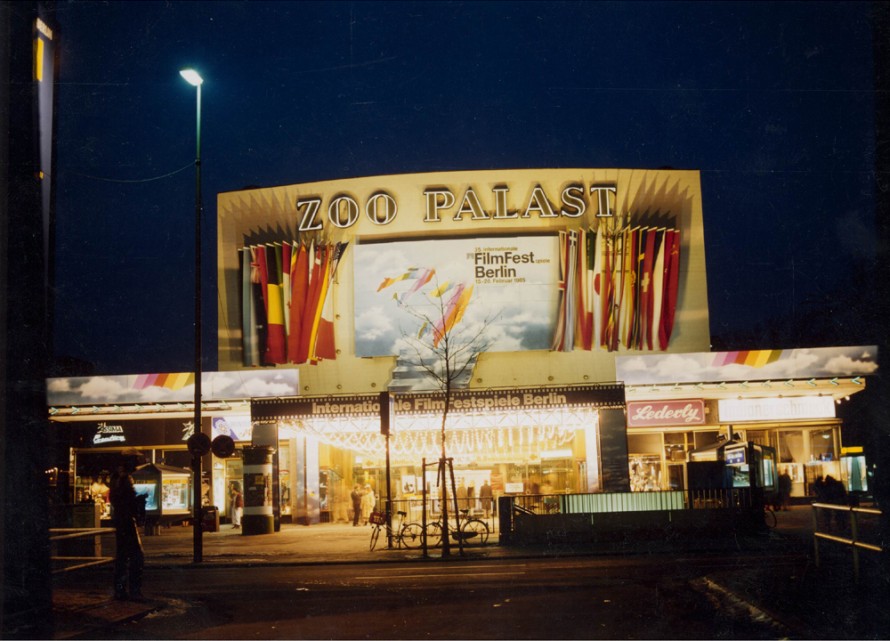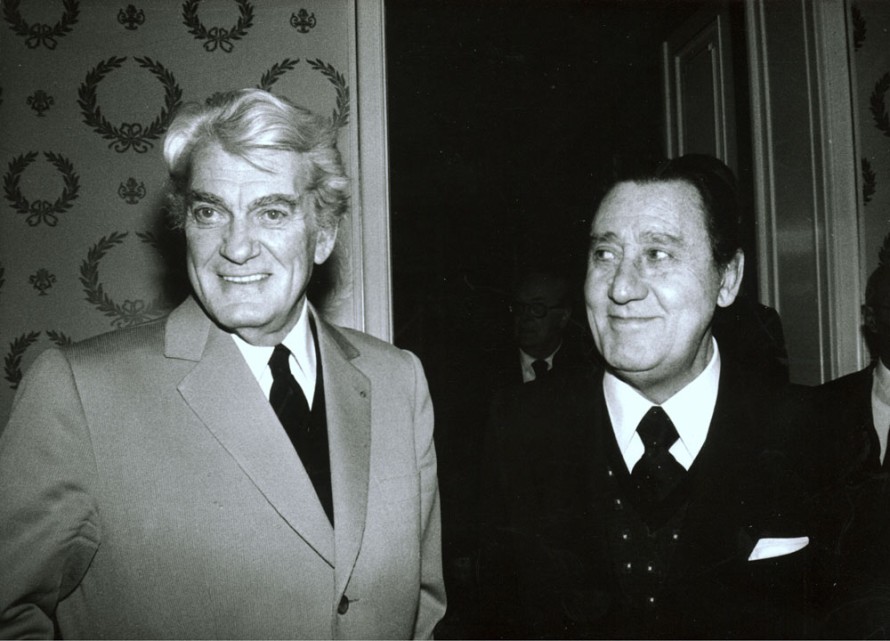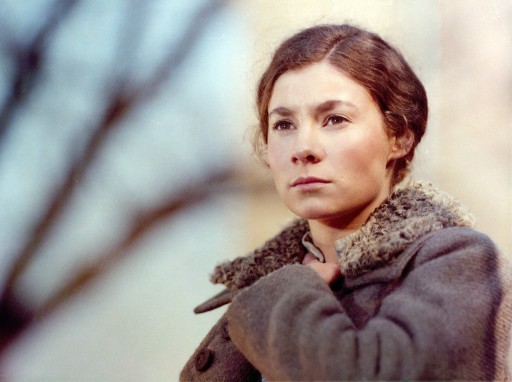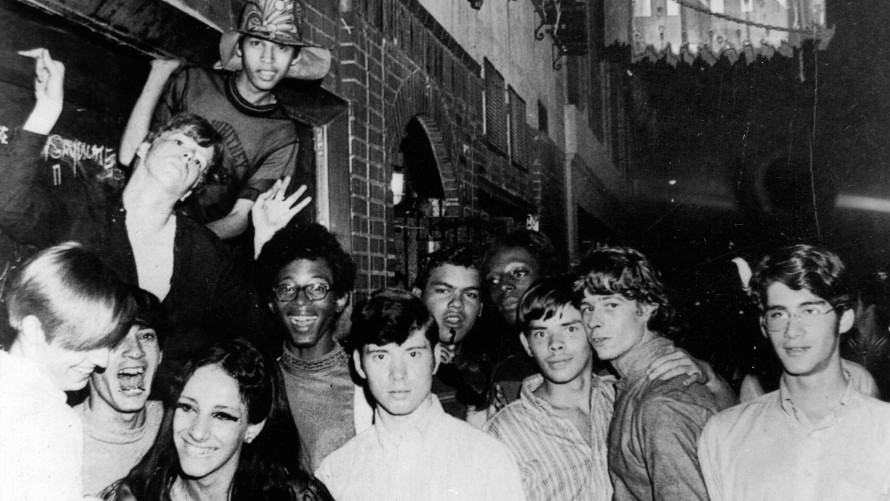1985
35th Berlin International Film Festival
February 15 – 26, 1985
"My view of world cinema, every year between winter and spring in Berlin, is fixed on a small diner on the direct route from the Festival office to the Zoo-Palast. In the flow of faces and handshakes combined with the sentence 'Let's talk some time', it offers a bit of comfort. ... When the Berlinale is over, Berlin is, one notices with amazement, still there. On the day after, however, one avoids the scenes of such recent collegial sociability. Having more or less already checked out, one wanders in and out alone. The Zoo-Palast shows Rambo VII." – A piece of contemporary festival prose by jury president Wolfgang Kohlhaase.

The Zoo-Palast-Theatre in the 1980s
You need to build bridges, if you don't want to sit between the chairs
The 1985 Berlinale was characterised by tireless efforts on just about every front imaginable, testifying to the challenges of running the festival. It was no secret that Moritz de Hadeln was interested in developing close contacts with the American film scene. The Competition was increasingly becoming a platform for so-called “big American entertainment movies”, while the Forum and the Info-Schau featured American independents and underground films.
At the same time de Hadeln was working on improving the relationship with Cannes and French cinema. The visit to Cannes by Berlin culture senator Volker Hassemer and the appointment of actor Jean Marais as jury president in Berlin were interpreted as gestures in this direction. Most of all though it was French cinema that put on a strong showing in this year’s Competition. Michel Deville’s Péril en la demeure | Peril, Marguerite Duras’ Les Enfants | The Children and Jean-Luc Godard’s Je vous salue, Marie | Hail Mary belonged to the outstanding films and were also the most intensely discussed. In a time of increased political influence on the film industry, Godard’s entry especially had the stuff for a scandal. Conservative catholic groups accused the film of blasphemy and tried unsuccessfully to have it banned. Worried questions were once again heard from the Ministry of the Interior, to which de Hadeln responded with marked reservation.

Jean Marais with his fellow member of the International Jury Alberto Sordi
The festival director also engaged his efforts in the often-evoked “mediating function” of Berlin and the Berlinale. In this spirit, and following the “Mediterranean Panorama” of the previous year’s Info-Schau, a “Baltic Sea Panorama” was put on this year, which showed films from the Soviet Union, Poland, East Germany, West Germany and the Scandinavian countries. Such parity-creating efforts could also be seen in the make-up of the jury this year, where Wolfgang Kohlhaase represented East Germany, as well as, to a certain degree, in the Competition films.
Nevertheless, East German filmmaker Rainer Simon, recipient of a Golden Bear for Die Frau und der Fremde, later voiced a somewhat sour assessment of this year’s Berlinale: It is almost as difficult for films to overcome the “wall in front of the money” as it is the Berlin wall, he complained. The world was being flooded with “commercial trash from North America” and he was frightened to observe “what the great majority of people (in East and West) are lining up to watch”.

Kathrin Waligura in Die Frau und der Fremde
The Retrospective is an audience favorite
Perhaps he had passed by one of the cinemas in which the Retrospective films were being shown. This section was devoted to “special effects” in 1984 and was so extensive that it started a week before the festival itself. The programme was a huge success with the audience and offered an interesting variation on de Hadeln’s focus on American cinema. “King Kong has an American passport”, he had written in an interim report to the board of trustees. Indeed, the tirades against commercial films often overlooked the fact that the history of cinema is also the history of a mass medium.
It don't pay to be square: Forum and Info-Schau are elaborating their rebellious image
Meanwhile, “ambitious” films got their fair share of attention as well. The thematic emphasis in the Info-Schau was on urban lifestyles and subcultures, within which there was a concentration on American images of the underground: Gringo by Lech Kowalski, Paul Cadmus – Enfant Terrbile at Eighty by Donald Sutherland, Screamplay by Rufus Butler Seder and It don’t pay to be an honest citizen by Jacob Burckhardt with William Burroughs and Allen Ginsberg, were examples of this interest of Manfred Salzgeber’s. This orientation would also considerably shape the “Panorama” profile, as the Info-Schau was to be called as of the following year.

Before Stonewall
With Before Stonewall, Greta Schiller and Robert Rosenberg’s documentary on the “invisible history” of the American gay rights movement, the Info-Schau also had a cult film of the political underground in its programme. This in turn was echoed by Rob Epstein’s The Times of Harvey Milk in the Forum. Epstein’s film documents the political climate and homophobia that led to the 1978 murder of gay civil rights activist Harvey Milk in San Francisco. Films that researched, made visible and worked through suppressed and repressed material dominated this year’s Forum. Robert Altman’s Secret Honor, a reckoning with Richard Nixon, was another American entry along these lines. German filmmakers were no less radical in judging their own history: Thomas Harlan’s Wundkanal: Hinrichtung für vier Stimmen and Eberhard Fechner’s three-part documentary Der Prozess were impressive and unsparing examinations of the Nazi past – and its continuing effects into the present day.